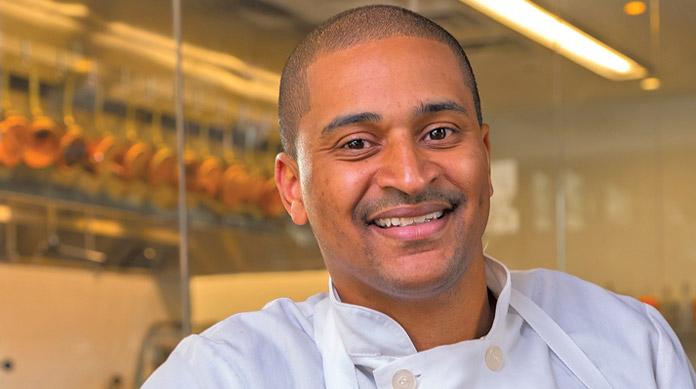
President & Executive Chef, Fieldtrip, New York City
Fast-casual restaurants have become the centerpiece of many New Yorkers’ eating habits. Within that segment, bowls have become a chosen canvas for chefs to create fare that can maximize takeout and delivery revenues.
Total Food Service wanted to delve deeper into how this phenomenon is expanding in the new normal. So, we sought out Chef JJ Johnson, President and Executive Chef, FIELDTRIP. The CIA graduate made his name in Harlem at the Cecil and Minton’s. His New York City based restaurant has turned the bowl into an art form. The sign on the exposed-brick wall in the restaurant says: “Rice Is Culture.” The map also marks the origin of each variety of rice served here. It is a community-based dining experience that celebrates culture through the shared experience of rice.
JJ Johnson sees FIELDTRIP as telling a story. His cuisine is influenced by global flavors and techniques used within various cultures. The restaurant uses heirloom grains with each rice telling a unique story of how it arrived in this country and into a customer’s bowl. Johnson is betting that a recipe of freshly milled and unbleached rice paired with ethically sourced vegetables and proteins will create a signature flavorful experience that both tastes good and is healthy.
Walk us through your career path.
I grew up in Northeast Pennsylvania with a Grandmother from Puerto Rico that was a terrific cook. I began as a dishwasher at 13 years old and I knew early on that I wanted to go to the Culinary Institute of America (CIA). Right out of high school, I went to the CIA and did an externship at Tribeca Grill in Manhattan. I took a year off and worked at the Skytop Lounge in the Poconos before coming back to New York. When I came back I worked at The Smith, the Morgan Stanley dining room and then the original Cecil.
What impact did Drew Nieporent have on your career?
From the very beginning at Tribeca Grill to this day, he has been an important mentor to me. I continue to talk to him every day for advice. I also can’t say enough about Brian Ellis, the executive chef at The Smith/Corner Table Restaurants and Zach Friedman at Morgan Stanley. I’ve also made friends and created a network of people I have never worked for like Rocco DiSpirito and Jonathan Waxman.
What are some of the key lessons from these mentors and friends?
Brian Ellis taught me how to run a restaurant, understand food costs, manage staff and create tasteful food. Zach Friedman showed me how to cook at a high level, buy food from purveyors and to understand ingredients. The network has been so valuable because, from the very beginning with the pandemic, I called Brian and asked him what to do. He told me exactly what I needed to hear, “You got this.”
Is your approach to buying to play Baldor and Chefs Warehouse off of each other?
I buy based on relationships. I’ve had the same relationship with Munch at Riviera Produce since I was a sous chef. He’s got my back and always makes sure I’m getting what I need. You need to understand the difference between the daily items you need and specialty produce meat for a one-off. When you start ordering because of the brand of the distributor versus understanding price and value then you are going to have problems. In fact, since we opened Fieldtrip, we have found that value at Sysco. Frankly, early on in my career, you would never dream of ordering from Sysco. How dare you be a high-end chef ordering from Sysco. Well, guess what? Thomas Keller orders from Sysco.
You need to understand the role and price of transportation in the distribution of food.
How did you get involved with C-CAP and what impact has it had on your career?
Some of my closest friends from CIA were C-CAP alumni and were the best students at CIA, like Carlton McCoy and Catherine Garcia. C-CAP hosted amazing events at CIA like Wolfgang Puck receptions and I not only wondered why C-CAP wasn’t available to me in high school, I was very interested in getting involved with them. As soon as I had my own kitchens, I was able to hire C-CAP grads. It gave me access to the best youth talent in New York City and make them better. I committed to support C-CAP and Mr. Grausman in any way that I could. At the US Open Tennis Tournament, we hired and got to work with a number of C-CAP kids. I’m encouraging my cousin to add the program at her school. Most of the kids from C-CAP that have come through my kitchen are now 21-ish and I know they are ready to make their mark. C-CAP offers kids a culinary program and to get to build and be a part of a community.
How has your vision of what it takes to run a successful restaurant in New York evolved?
Hard work and passion have always been my success.
The next piece I’ve determined is the location. I worked with Richard Parsons, the former Citigroup Chairman on The Cecil. We both knew that if it was on 125th Street it would have been a home run.
Density of potential guests plus “Deliciousness”. Will people actually wait four hours in line for your food? We even brought the same concept to Fieldtrip. They can walk across to Popeyes and get chicken for $2.99.
Again, there’s also a lot to location. Are you on the uptown or downtown side of the street? In New York City, that will actually dictate the times of the day that you will be busy.
The final piece is affordability. At the Cecil, I would hear chatter about price, so that I can eat here more. It confused me because the pricing was on-par with The Smith. At Fieldtrip coming in with something under $12 bucks in Harlem works! With that has come a customer base that is loyal and make multiple visits every week.
You have to understand the psyche of your customers.
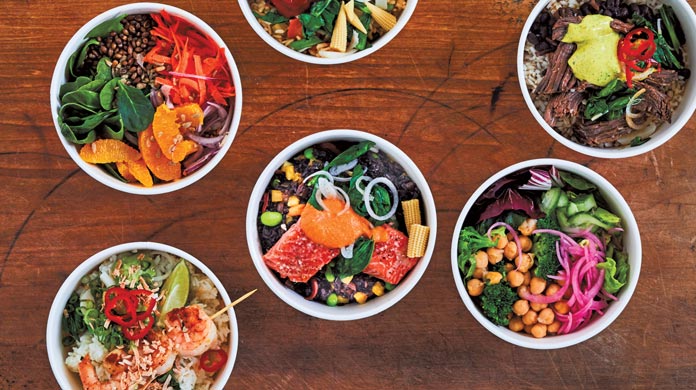
How has your cooking style evolved?
When I came out of culinary school, I was cooking new American, French and Italian, the things I was told to cook. When I traveled to Ghana, in West Africa, it opened my eyes to cooking the fare of the African Diaspora and Afro-Caribbean dishes. It was who I was and it made me realize what I should be cooking. That’s very hard for a lot of talented chefs to figure out what it is they should be cooking and realize who they really are. Not a lot of folks get that chance. Risotto, polenta, pasta in many cases, we simply master our craft.
So who are you?
(Chuckles) I am the ambassador of Afro-Caribbean and African Diaspora cuisine as well as the “Rice God”. I cook the food for the people. It’s all about spice, boldness, and flavor.
Where did the inspiration for Fieldtrip come from?
It came from getting the opportunity to cook all over the world from Singapore, Israel and India. In each case rice was the key component. You have to understand, nobody in the rest of the world cares about the protein, the discussion is always about the rice. They love the fresh dried fruit in their rice. We don’t have that reaction in the U.S., so I wanted to make it happen here. To me rice is all about the Grandma and Grandaddy grains which means where is it coming from. Then it’s up to me to capture the inspiration of that rice. Is it China Black Rice or Carolina Gold, that dictates the execution of the dish. I also want to make sure that there is no bleach or enrichment. Sourcing and buying rice is like buying a great tomato or beef.
Could you roll out and franchise multiple Fieldtrips across the country?
100% Absolutely, that is the plan.
You have a really interesting musical background.
Music to me is all about nostalgia. You can remember where you were when things happened in your life. It brings people to those ultimate moments. My goal is to marry those magic moments in life with great music and food to hit a home run. At Fieldtrip, there are two customizable playlists and we want the staff’s involvement as well.
We have a Jamaican guy on staff who loves Bob Marley so that’s what our patrons hear when he’s in the shop. Music helps push people from a bad moment to a good moment.
How has COVID changed how you look at the importance of Takeout & Delivery?
Prior to the pandemic, we were at 20% delivery and another 40% was takeout and of course we had people eating lunch or dinner or they were out on a date. That evolved very quickly into what was a quick fast casual into a full-fledged QSR operation. We figured out very quickly that it’s all about being able to fill orders quickly and making sure you have bags and supplies ready to go. One of the keys was that we added our own in-house delivery with our own people that we have dubbed “Concierges of Deliciousness.” They are the last line of communication with the guest and I want to control that interaction. I don’t want to get involved in that third party conversation when an order goes wrong, that’s ok and we will refund the money. You can’t afford to let somebody else lose a customer for you. My thought was let’s handle delivery internally within a 10-block radius and then use the DoorDash platforms beyond.
This summer also brought the Black Lives Matter movement to the forefront. What are your thoughts?
I think it is very much a part of the reset to our society that COVID has brought. It’s all a part of the sun being brighter and the grass being greener. You had a lot of people at home when that awful tape from Minneapolis appeared on your TV screen. It was eight minutes and 26 seconds and no matter who you were, it was just shocking. Everybody said wait a minute, this is disgraceful. My goal is that we all participate in re-building society brick by brick together.
How about in terms of our industry offering opportunity to all?
We have not made progress as an industry. The first area is the difficulty in raising capital to open a restaurant. Keep in mind that most of the best restaurants around the world are dominated by white males. There’s never anybody of color on those lists and if they are, they are Asian. It’s a European industry with guys like Paul Bocuse who was known for only having white male people working his kitchen. There’s a trickle-down effect.
Can a chef just cook anymore? Do you have to have TV shows and write books?
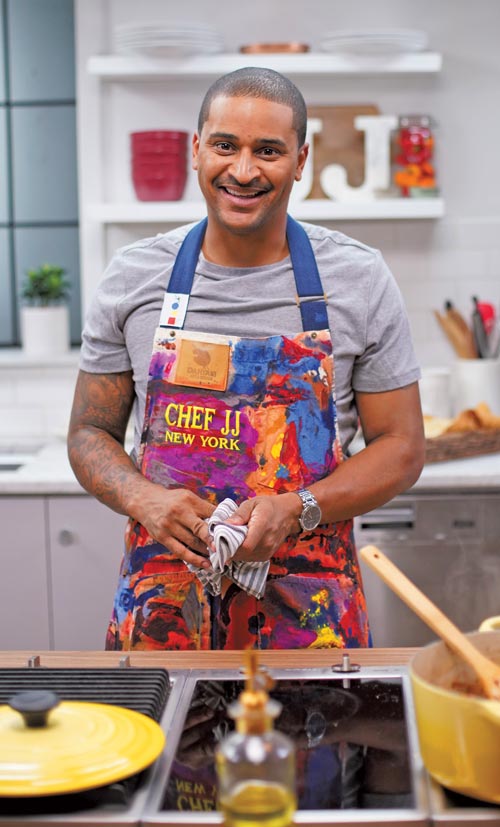
It’s different for every chef. Not everyone is built for TV or writing cookbooks. Every chef would like to be on TV, it’s like making the NBA or NFL. For me, it always starts with the food. If you don’t have great food, there’s nothing to talk about. Bobby Flay cooks good food and that’s why when he is on TV people trust him. Wolfgang Puck, the same thing. Rachel Ray and Giada take a different approach as they try to educate you on food and ingredients. You can’t be a brand without a restaurant but you can be a brand without a TV show. Andrew Carmellini has a strong brand but doesn’t have a personality that fits on TV.
You’ve built your brand with restaurants and writing. Talk about your approach to writing?
With Between Harlem and Heaven, I wanted a book that would be looked like books from Per Se and Aquavit. Books that help and educate. I am going to continue to write with the next book focused on rice. At 40, I will write a memoir that tells the story of young JJ, then mid-career JJ, Party JJ, and of course naming names of those who treated me well and those who didn’t.
I’ve seen you at virtually every major charity event. What role does giving back play?
It’s a foundation of who I am. My Dad ran a non-profit when I was a kid and my Mom ran AAU basketball programs in PA. So, it was ingrained in me and my Sister. For me at the top of the list is ending hunger with Food Bank of New York working with C-CAP and Edible Schoolyard.
The chef has so much power to help. That’s why during COVID, we did whatever we could do to feed front line workers and children and families in need.
How has marketing a restaurant evolved?
Our biggest marketing tool is newsletters. You can’t rely on any one thing to accomplish the job. I think the role of media is to guide people on how to dine. We need to help our guests understand things like the roles of QSR codes, eating outside, how to interact with their server and even the use of a paper plate. I’m spending $50 and there’s no server, why?
Are you happy with where we are with bringing along the next generation?
Some are doing a great job of nurturing and mentoring. They typically have a talent pool of people that want to work for them. If we don’t nurture the future than who is going to do the work and grab the torch?
What impact will COVID have on the type of leases you sign for your restaurants moving forward?
I hope that things change. I would imagine if you are still standing after COVID that it will give you the ability to go to landlords and developers and negotiate a lease that is based on a percentage of your restaurant’s revenues. It’s really part of an overall change that needs to come in our industry with key issues including how we pay people, the amount of sales tax and rent. The goal is to create an environment in which the dining patron is paying less to dine out. I heard an interview with the CEO of Marriott and he thinks there will be two types of restaurants after COVID, super high-end and then an affordable lower-end.
My problem with that is will the LaFrieda and Baldor pricing change to reflect the marketplace?
You are right, it won’t. But a commodity like meat will see pricing hold on grass-fed beef but other cuts will fluctuate to reflect how markets change.
What do you see in the crystal ball for your future?
Right now in this market with a fast-casual concept, you need to think like a capitalist. Growth is cheaper than ever before. Chipotle and other fast-casual restaurants have become the centerpiece of New Yorkers eating habits. Within that segment, bowls have become a chosen canvas for chefs to create fare that can maximize takeout and delivery revenues.
All photos courtesy of JJ Johnson.
To learn more about JJ Johnson and Fieldtrip, visit the website.


















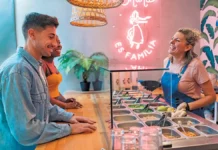
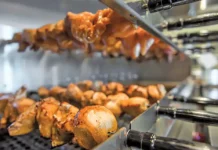
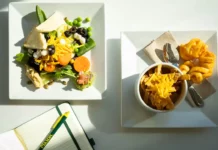

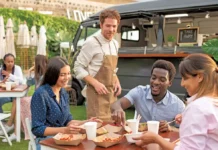

Comments are closed.